Ulysses distinguishes between writing and formatting the text during export to provide a distraction-free environment. This means that you need to customize the export style to change the appearance of your exported file.
Please note: Customizing an export style is currently only available for Mac. However, while you can only create a new export style on a Mac, it will synchronize with your iPhone or iPad devices via iCloud. If you do not have a Mac or need help customizing your export style, please contact our support team directly.
How to Customize an Export Style
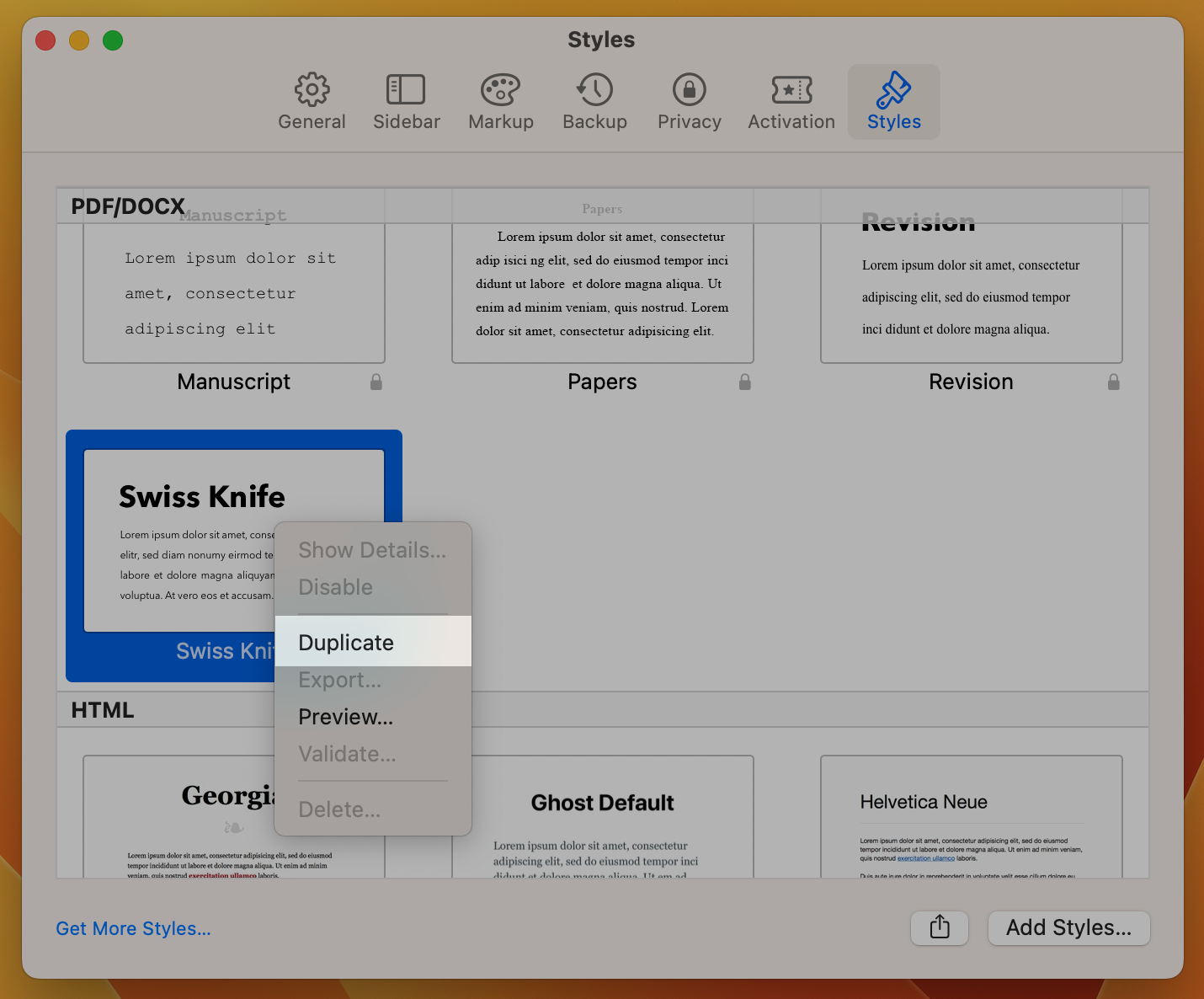
Here is how to customize an export style in Ulysses:
- Go to the menu Ulysses and select Settings…
- Switch to Styles and choose a style from the PDF/DOCX section, e.g., Swiss Knife
- Right-click on the stylesheet and select Duplicate
- Right-click the duplicated stylesheet and select Edit in
- Select an editor of your choice, e.g., TextEdit or TextMate
- From the list below, choose what you want to adjust in your export style to see the next step:
Insert Page Breaks
There are two ways to achieve page breaks:
Use Divider Tag
To manually insert page breaks, you can use the Divider tag ----. Some export styles, like “Swiss Knife,” will then insert a page break when exporting. However, for styles like Papers, you’ll need to modify the style sheet for this to work.
To do this, locate paragraph-divider in the style sheet and adjust it as follows:
paragraph-divider
page-break: after
}Use Automatic Rules
You can also set up automatic rules so that, for example, every level 2 heading is preceded by a page break. To do this, find heading-2 in the style sheet and add the line page-break: before as shown here:
heading-2
font-size: 24pt
line-height: 28pt
margin-top: 7mm
margin-bottom: 5mm
page-break: before
}Add Margins
A common style for novels is to start a new chapter in the lower half of the page. This can be done by adjusting the margins.
Locate the heading where you want to add a margin and set margin-top to your desired size:
heading-1 {
font-size: 32pt
font-weight: bold
line-height: 2em
margin-top: 300pt
margin-bottom: 30pt
}
First Line Indent
To indent the first line of the first paragraph, find or add the selector paragraph and adjust the first-line-indent. Here is an example:
paragraph {
first-line-indent: 5pt
}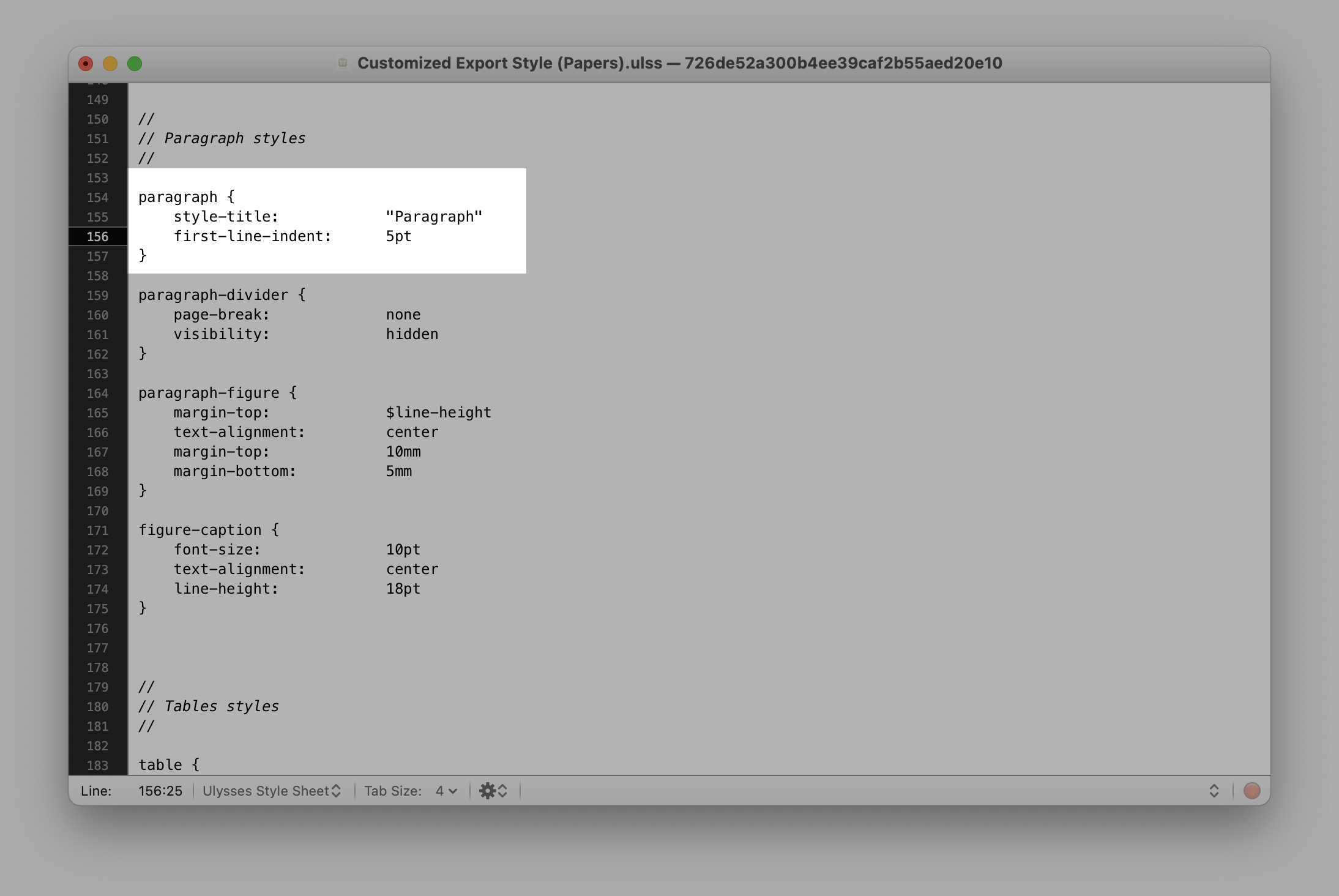
You can also indent the first line of a paragraph, except for the first paragraph. To do so, find or add the selector paragraph + paragraph and adjust the first-line-indent. Here is an example:
paragraph + paragraph {
first-line-indent: 5pt
}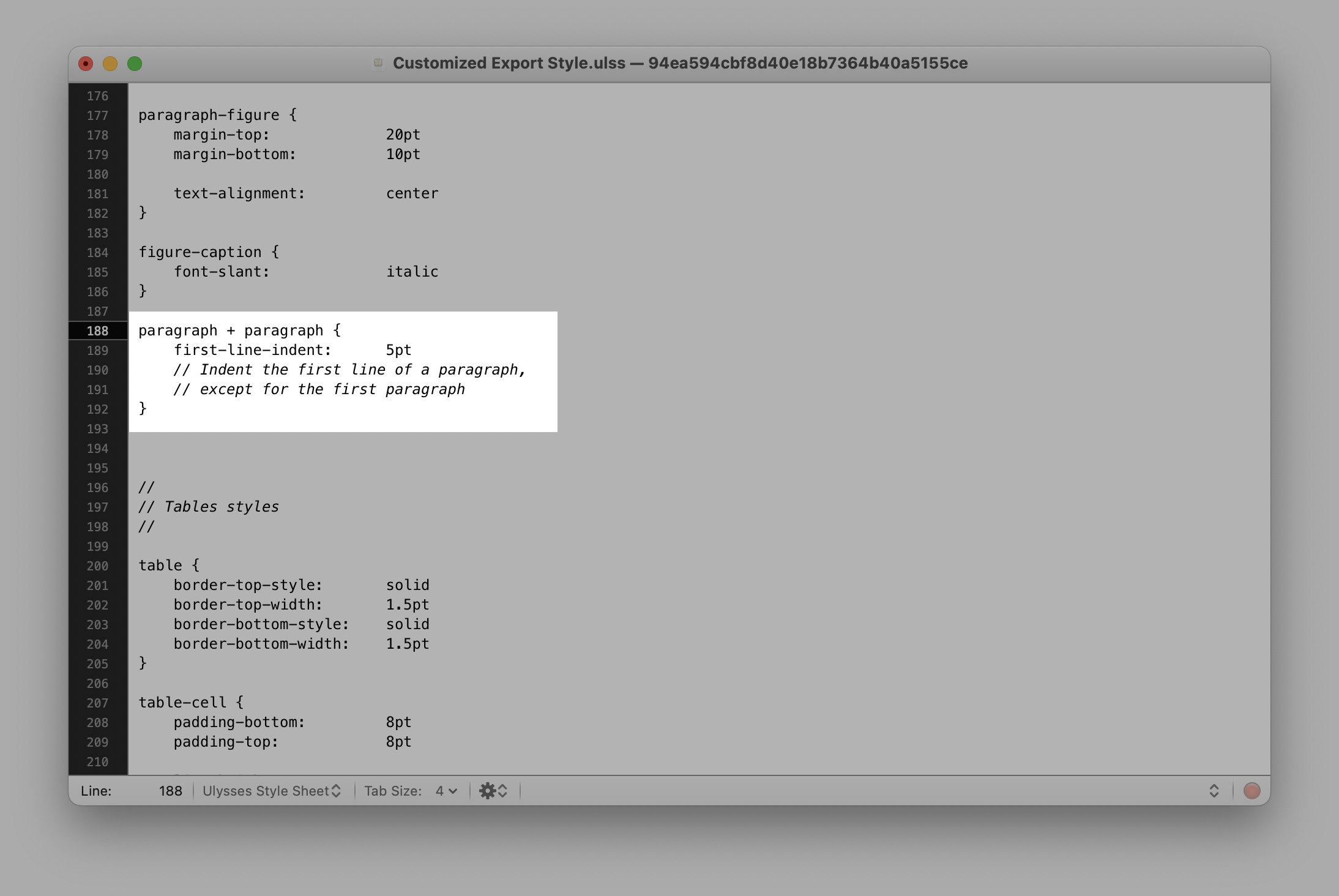
Typography
To adjust the default typography, find the selector defaults and change the name of font-family. Here is an example:
defaults {
font-family: "Optima"
font-size: 12pt
line-height: 24pt
text-alignment: justified
hyphenation: yes
}
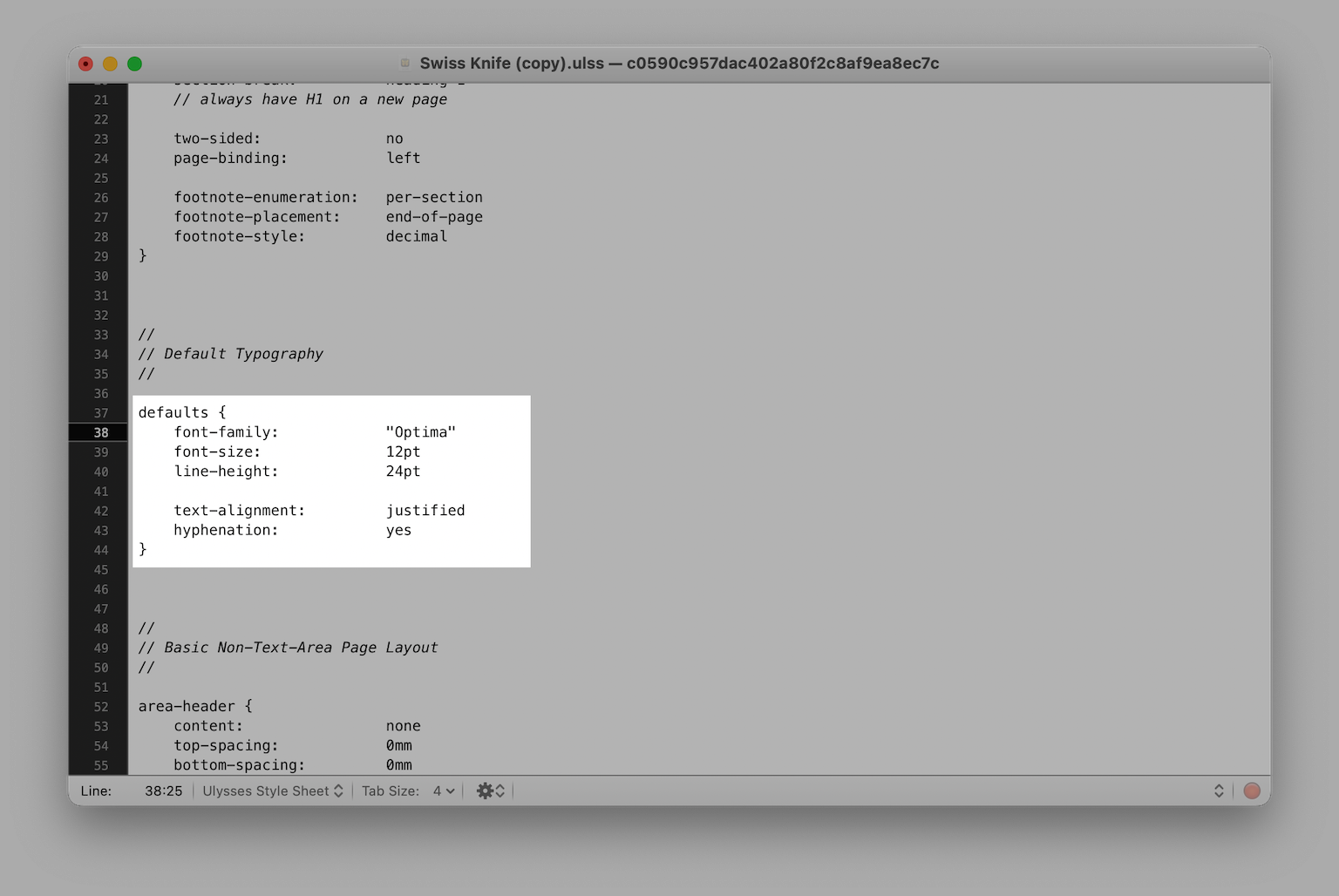
You can also change the font family of other selectors such as headings or footnotes. In this case, find the specific selector (for example heading-1) and adjust the font to your liking.
Font Size
To adjust the default font size, find the selector defaults and adjust the value of font-size. Here is an example:
defaults {
font-family: "Avenir Next"
font-size: 14pt
line-height: 28pt
text-alignment: justified
hyphenation: yes
}
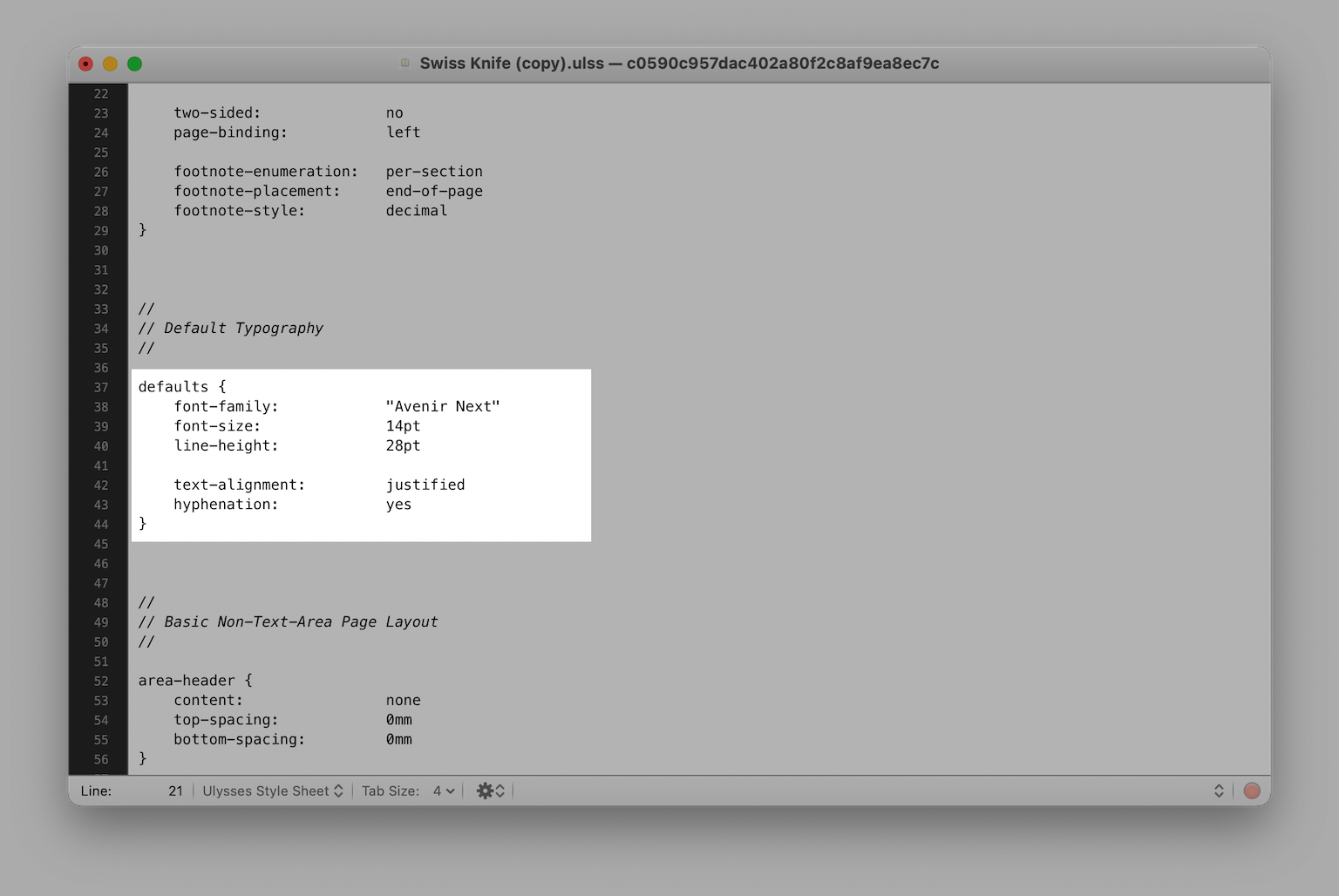
You can also change the font size of all selectors, such as headings or footnotes. In this case, find the specific selector (for example heading-1) and adjust it to your liking.
You may also want to adjust the line height accordingly when you adjust the font size. This will make the result look proportional.
Text Alignment
Paragraph Text
To define the horizontal alignment of a paragraph’s text, find the selector defaults and add or change text-alignment to left, right, center, justified or auto. Here is an example:
defaults {
font-family: "Avenir Next"
font-size: 12pt
line-height: 24pt
text-alignment: left
hyphenation: yes
}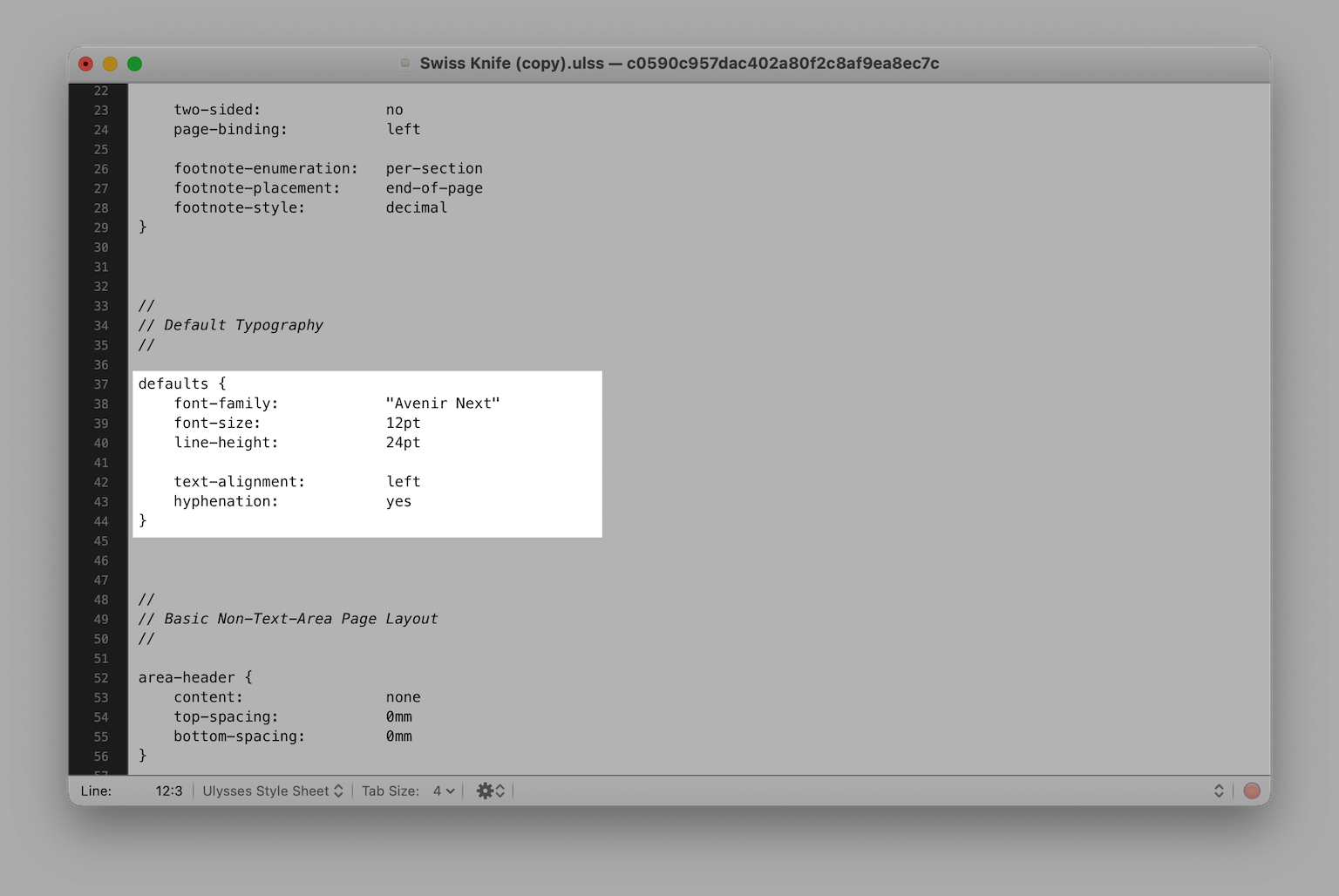
Headings
To adjust the text-alignment of your headings, please find the selector heading-all:
heading-all {
line-height: 100%
keep-with-following: true
text-alignment: center
}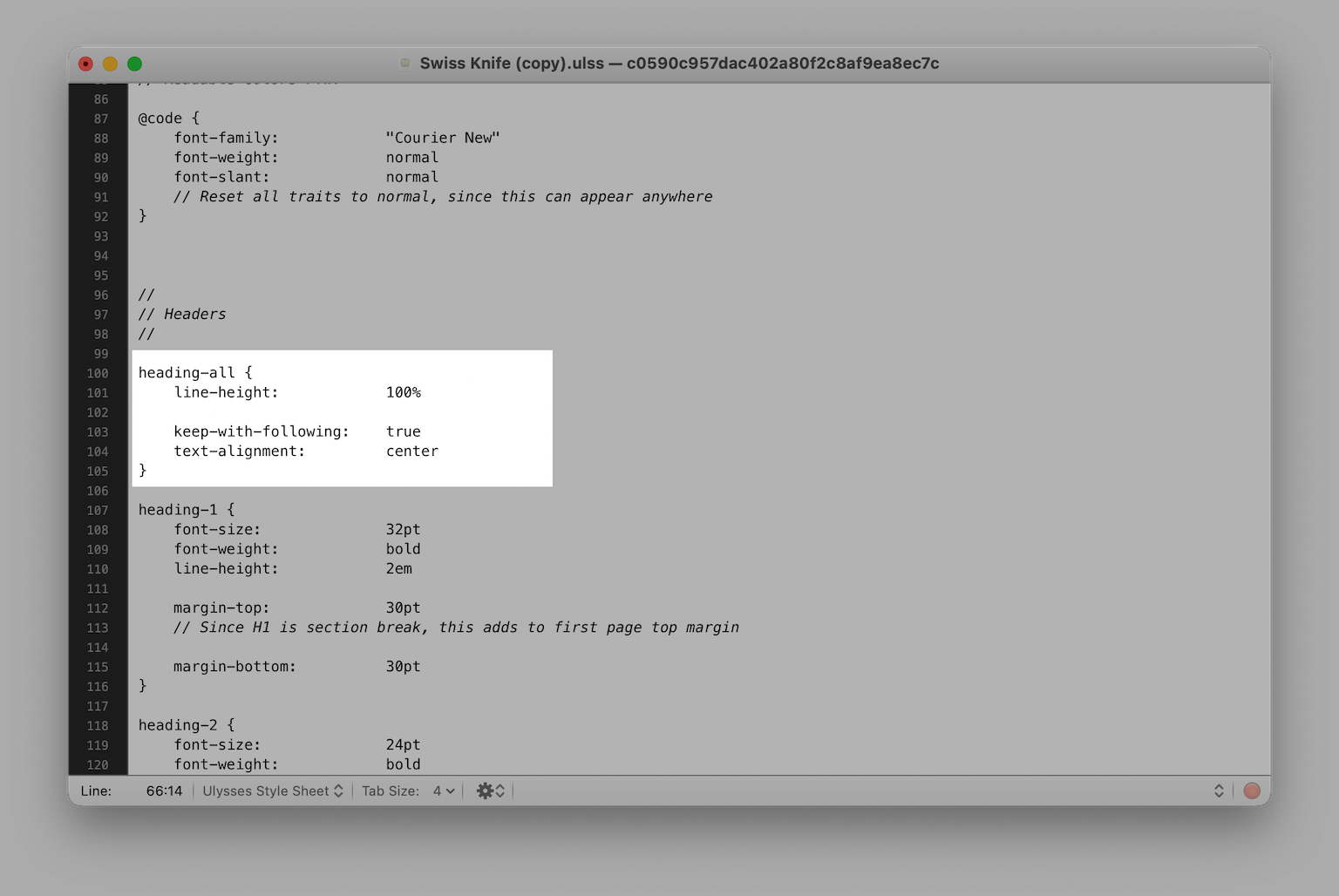
Images & Equations
In Ulysses, images and equations are categorized as figures. To adjust their text-alignment , navigate to the selector paragraph-figure (found under Paragraph styles) and modify the text-alignment to left, center, or right. Here's an example:
paragraph-figure {
margin-top: 20pt
margin-bottom: 10pt
text-alignment: left
}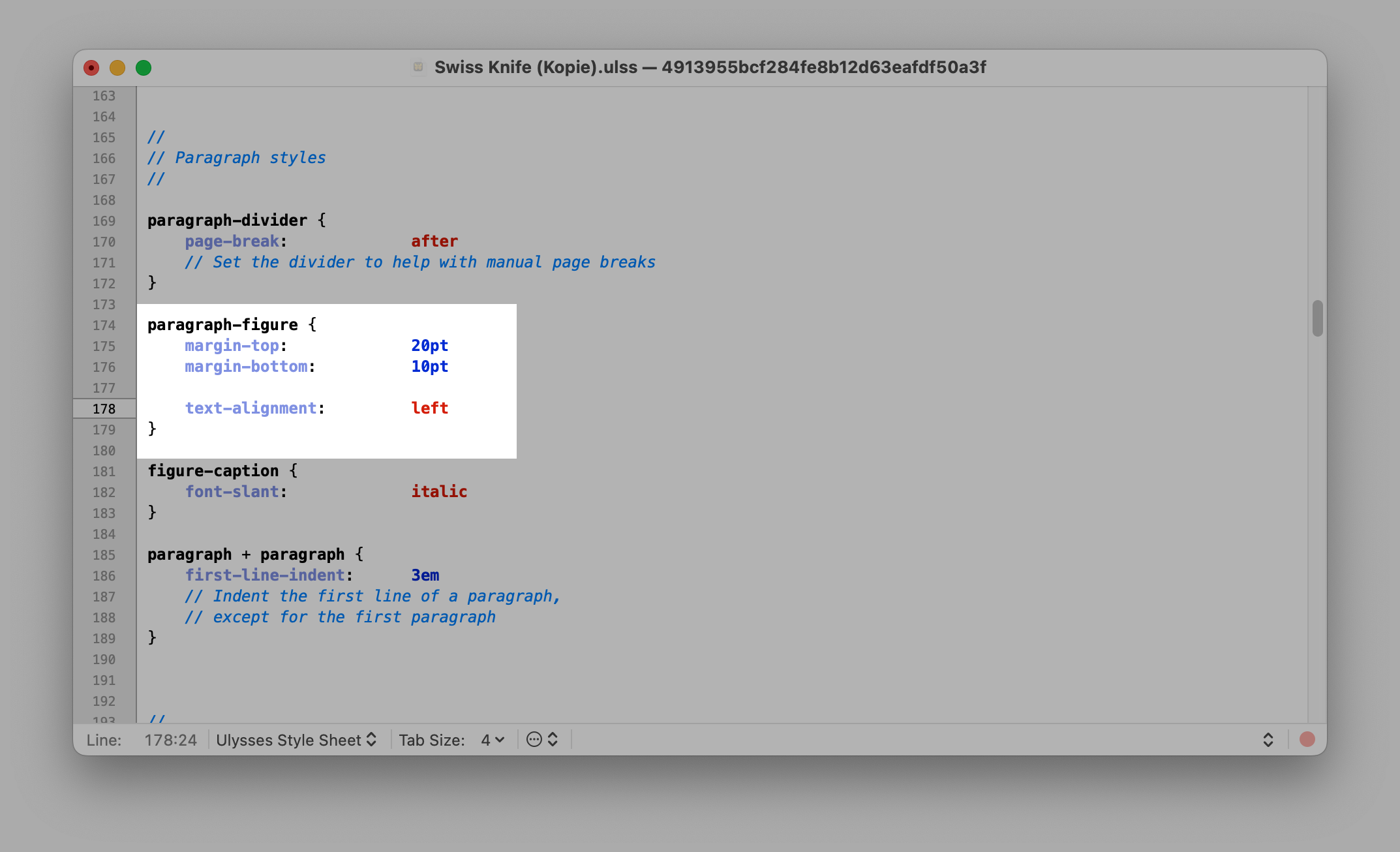
Please be aware that any adjustments made to the paragraph-figure setting will affect all images and equations throughout the document. Also, if you have captions, you'll need to set the text alignment for figure-caption accordingly.
Footnote Placement
To adjust the placement of your footnotes, find the selector document-settings and change the footnote-placement variable to end-of-document, end-of-section or end-of-page. Here is an example:
document-settings {
footnote-enumeration: per-section
footnote-placement: end-of-document
footnote-style: decimal
}
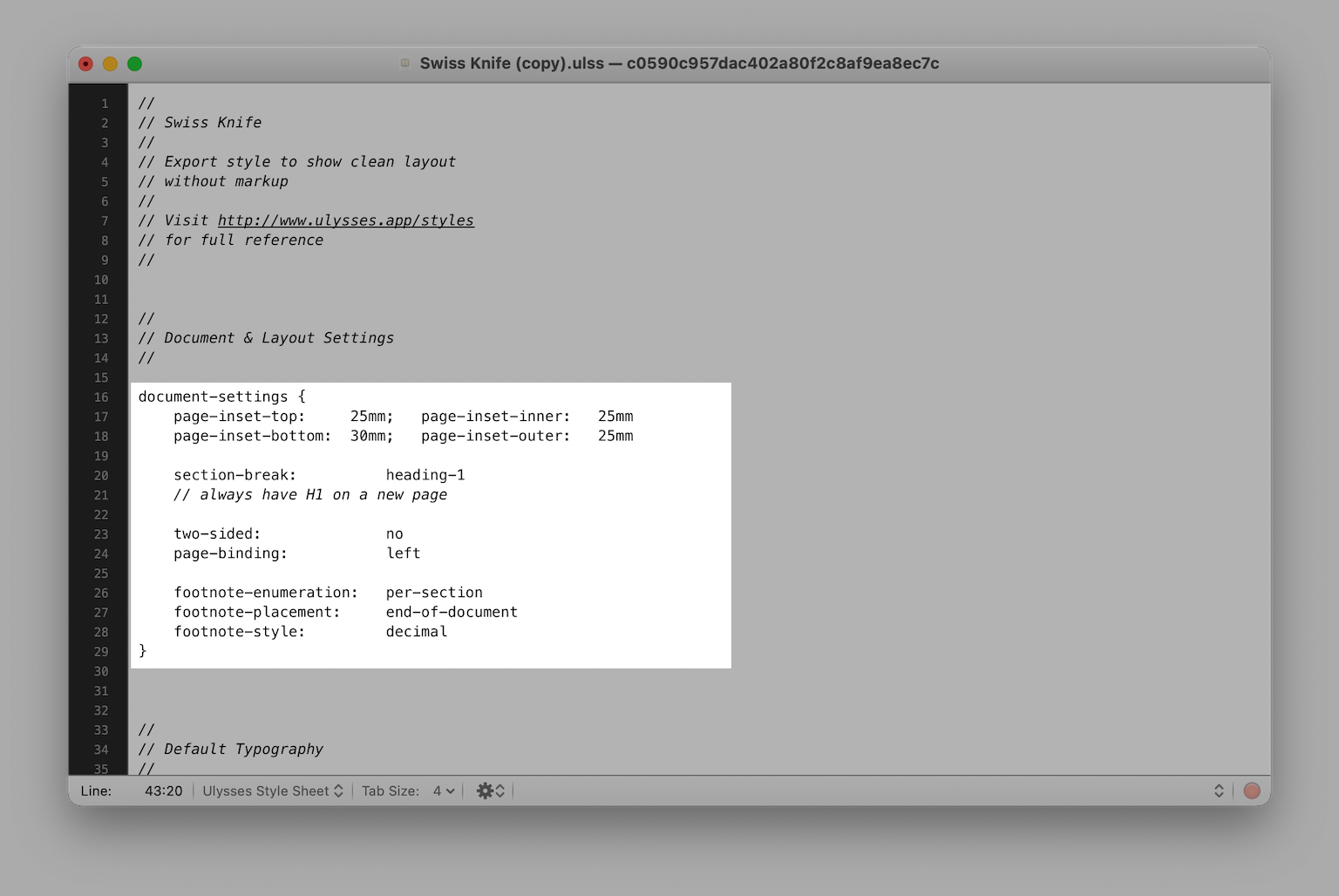
Underline Text
To underline text in your exported document, find the selector inline-mark under Inline styles and modify it as follows:
inline-mark {
underline: single
}

Margins Between Paragraphs
In Ulysses, excessive whitespace is disregarded or removed to comply with the Markdown specification. To increase the spacing between paragraphs, locate the selector paragraph + paragraph and include the lines margin-top and/or margin-bottom. By adjusting the value for margin-top and margin-bottom (here: 2em, you can also use 200% or 20mm), you can adjust the spacing as desired. Here is an example:
paragraph + paragraph {
margin-top: 2em
margin-bottom: 2em
}If the paragraph + paragraph element doesn’t already exist in the export style you’re modifying, simply include all the lines mentioned above under Paragraph Styles.
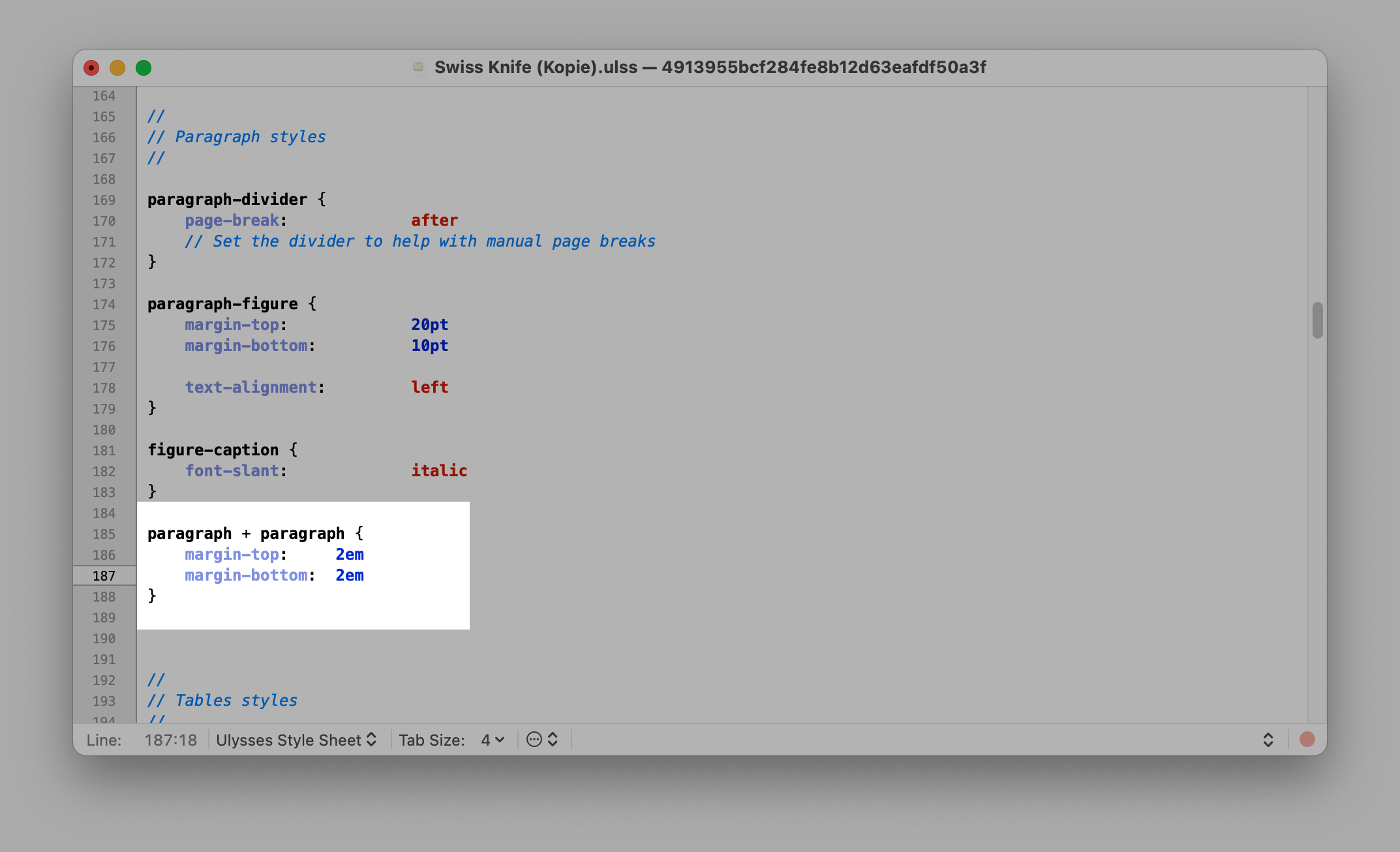
Block and Inline Comments
By default, comments are not exported unless you select the export style “Revision.” To export block comments, find the selector block-comment under Block styles and adjust the visibility:
block-comment {
visibility: visible
}
To export inline comments, find the selector inline-comment under Inline styles and adjust it as follows:
inline-comment {
visibility: visible
}
- Save the stylesheet (optional: rename the style by double-clicking it and editing the name in the popover menu)

- Select your customized export style in the export preview
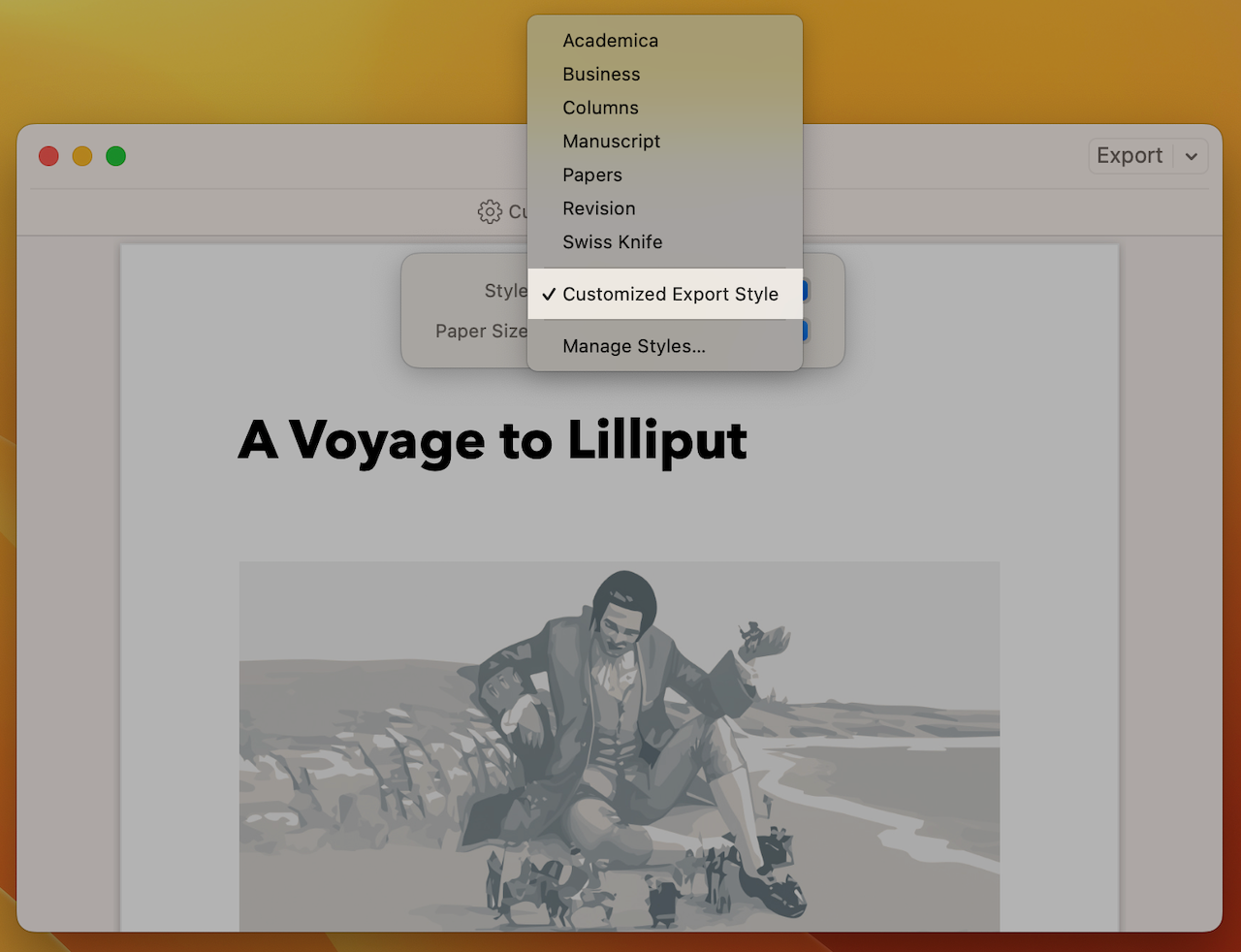
For more information on how to customize your PDF/DOCX document, check out the following guides:
Export, Delete and More
Maybe you want to upload an export style to our Styles and Themes website or send the style to a fellow Ulysses user. In this case, you can also export your custom style. To do so, go to Ulysses › Settings… › Styles. Then, right-click the export style and select Export.

You can also delete a custom export style from here by clicking Delete. To delete a custom export style on your iPhone or iPad, open the export preview, tap on the brush icon and then on the currently selected style. Then, swipe to the left on the custom export style and select Delete.
Please note that pre-installed export styles are locked and cannot be edited, exported or deleted. They can only be duplicated and previewed.